 The Restaurant of Lost Recipes (Kamogawa Food Detectives, #2) by Hisashi Kashiwai, Jesse Kirkwood
The Restaurant of Lost Recipes (Kamogawa Food Detectives, #2) by Hisashi Kashiwai, Jesse Kirkwood Format: eARC
Source: supplied by publisher via Edelweiss
Formats available: hardcover, paperback, ebook, audiobook
Genres: cozy mystery, foodie fiction, literary fiction, magical realism, translated fiction, world literature
Series: Kamogawa Food Detectives #2
Pages: 224
Published by G.P. Putnam's Sons on October 8, 2024
Purchasing Info: Author's Website, Publisher's Website, Amazon, Barnes & Noble, Kobo, Bookshop.org, Better World Books
Goodreads
The Restaurant of Lost Recipes is the second book in the bestselling, mouth-watering Kamogawa Food Detectives series, for fans of Before the Coffee Gets Cold.
We all hold lost recipes in our hearts. A very special restaurant in Kyoto helps recreate them...
Chef Nagare and his daughter Koishi serve their customers more than delicious food at their Kamogawa Diner down a quiet street in Kyoto. They can help recreate meals from their customers’ most treasured memories. Through ingenious investigations, these “food detectives” untangle flavors and pore through old shopping lists to remake unique dishes from the past.
From the swimmer who misses his father’s lunchbox to the model who longs for fried rice from her childhood, each customer leaves the diner forever changed—though not always in the ways they expect…
A beloved bestseller in Japan, The Restaurant of Lost Recipes is a tender and healing novel that celebrates the power of community and delicious food.
My Review:
The premise of this series is simple, beautiful and TRUE in all the best ways.
Hunger may be the best sauce, but nostalgia comes a close second. The difference is that hunger makes everything taste better – while nostalgia can only be satisfied by the correct combination of flavors and smells. The one that takes us back to the original that we remember so fondly and are able to reproduce so rarely.
It’s that reproduction – and the memories that come along with it – that makes this series both fascinating and heartwarming.
The Kamogawa Food Detectives are Chef Nagare and his adult daughter Koishi. Their little hole in the wall restaurant in Kyoto is a place that only the locals know. There’s no sign outside and they do almost no advertising. What little advertising they do isn’t even about the restaurant.
Their one line ad in a gourmet magazine proclaims, “We Find Your Food!”, which is exactly what they do. The clients for their food detection service come because they are desperate to recreate a taste – and the feelings that go along with it – that they barely remember but can’t let go of.
That they succeed isn’t magic – but it is. All it takes is a story and a fading memory and a whole lot of detection on the part of Chef Nagare – as well as a whole lot of taste-testing on the part of Koishi – to recreate just what the client has been searching for.
Each case – each story – is just a bit different. The process is the same, but the results are as variable as the clientele. Along the way, linking the separate vignettes into a harmonious whole, is the story of Nagare and Koishi, their banter, their gentle teasing, their excellent father-daughter relationship – and the way they include the missing member of their family, Nagare’s late wife Kikuko – in a way that demonstrates love and care and gentle grief and moving on all at the same time.
There may not be magic in the fantasy or magical realism sense in this book or this series, but the story is absolutely magical all the same.
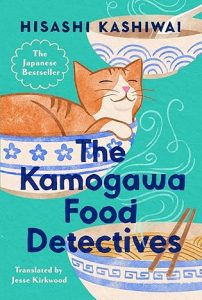 Escape Rating A-: This is the series that got me firmly hooked on these cozy mystery/fantasy/magical realism type stories (the ones that trace their origin inspiration to Before the Coffee Gets Cold). After devouring this book in one sitting, I’m now certain that this is my favorite of them all in spite of the fact that nearly all of the others, there’s not even a hint of any actual magic.
Escape Rating A-: This is the series that got me firmly hooked on these cozy mystery/fantasy/magical realism type stories (the ones that trace their origin inspiration to Before the Coffee Gets Cold). After devouring this book in one sitting, I’m now certain that this is my favorite of them all in spite of the fact that nearly all of the others, there’s not even a hint of any actual magic.
It still seems like magic, but I think that magic can be put down to two factors – or at least this is how it’s working for me. One factor is the background story, the relationship between Nagare and his adult daughter Koishi and that it does work. Their relationship is just plain good in a way that seems magical because I honestly can’t imagine ever living with my parents as an adult and having them actually treat me as a functional adult. We weren’t that fortunate – although Koishi is.
We don’t get a lot of their daily lives in the spaces between their customers’ stories, but the bits we do get seem to be building on each other in a way that I simply find charming and heartwarming and I hope that other readers do as well.
As much as I enjoy the individual customers’ stories, Nagare and Koishi are the people carrying the story overall, and the other part of what I love is that the ‘magic’ of their food detective business comes down to good interview techniques on Koishi’s part, good investigative skills on Nagare’s part, a willingness to chase down any clue as well as, of course, Nagare’s skill in the kitchen and his willingness to experiment as often as it takes to get the dish exactly right.
The stories wouldn’t be half as much fun if they could just snap their fingers and make it happen. The breathless anticipation on the part of the customer – and the nervous worry on the part of the chef and the detective – make each customer’s story really pay off for both them AND the reader.
I do enjoy the individual stories, but without Nagare and Koishi to tie it all together the books wouldn’t work nearly as well, at least for this reader.
I’ll admit that I’ve been salivating for this book since the minute I finished the first book in the series, The Kamogawa Food Detectives. I mean that both literally and figuratively, as the food described within both stories as well as their presentation is absolutely mouth-watering. So don’t go into this series hungry. I mean it! You have been warned!
IMHO, this was totally worth the wait. I loved it and ate it up in one sitting. I’m just happy that there are several more books in the series in the original Japanese, so I have hopes that more will be translated – preferably as soon as possible!

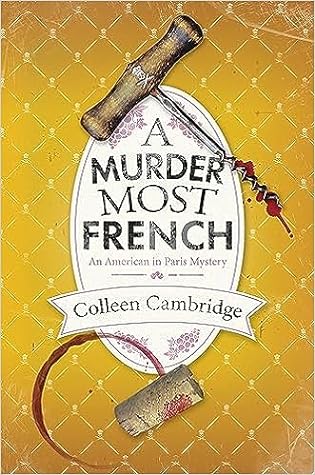 A Murder Most French (American In Paris Mystery, #2) by
A Murder Most French (American In Paris Mystery, #2) by 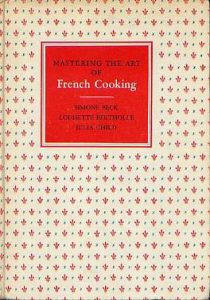 Julia Child is too busy learning French cooking, living her larger-than-life life in Paris AND at the beginning of writing her masterpiece,
Julia Child is too busy learning French cooking, living her larger-than-life life in Paris AND at the beginning of writing her masterpiece, 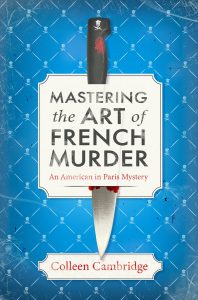 Escape Rating A+: If you loved the first book in this series – and who didn’t? – you will run, not walk to get this second book because it’s every bit as charming as the first. If you still need a bit of convincing, I’m going to get right to that.
Escape Rating A+: If you loved the first book in this series – and who didn’t? – you will run, not walk to get this second book because it’s every bit as charming as the first. If you still need a bit of convincing, I’m going to get right to that.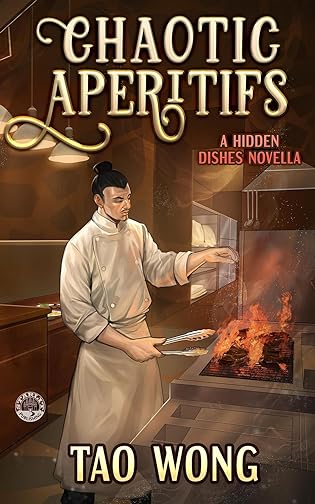 Chaotic Apéritifs: A Cozy Cooking Fantasy (Hidden Dishes Book 2) by
Chaotic Apéritifs: A Cozy Cooking Fantasy (Hidden Dishes Book 2) by  Escape Rating A-: I’m doing this review a week early so that you have a chance to read the tasty first book in the
Escape Rating A-: I’m doing this review a week early so that you have a chance to read the tasty first book in the 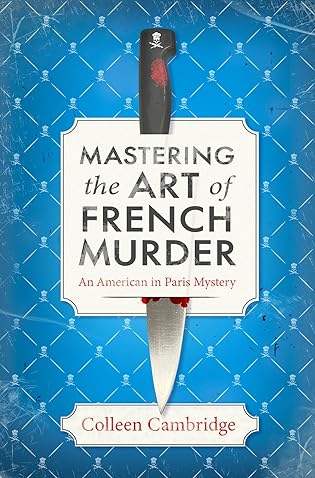 Mastering the Art of French Murder (An American In Paris, #1) by
Mastering the Art of French Murder (An American In Paris, #1) by  And then there’s Julia Child herself, much too boisterous to ever be considered merely a secondary character and certainly not a sidekick, who draws readers in with her true-to-life mannerism, her real, documented history working for the OSS in the war, and her larger-than-life presence on so many wonderful pages of this story.
And then there’s Julia Child herself, much too boisterous to ever be considered merely a secondary character and certainly not a sidekick, who draws readers in with her true-to-life mannerism, her real, documented history working for the OSS in the war, and her larger-than-life presence on so many wonderful pages of this story.
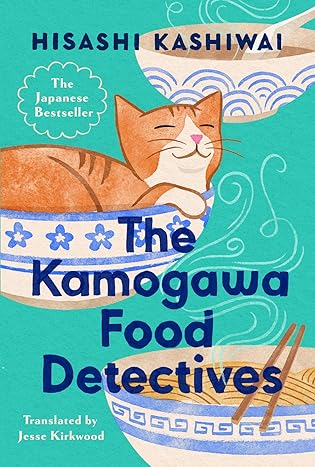 The Kamogawa Food Detectives (The Kamogawa Food Detectives, #1) by
The Kamogawa Food Detectives (The Kamogawa Food Detectives, #1) by 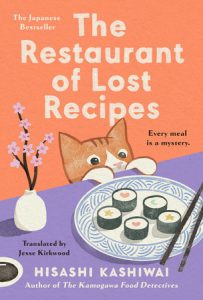 Speaking of magic, however, if the taste of The Kamogawa Food Detectives is as appealing to you as it was to me, if you would like to try something similar with a more overt hint of magic (I say more overt because it could easily be claimed that what these food detectives do IS magic) you might want to try
Speaking of magic, however, if the taste of The Kamogawa Food Detectives is as appealing to you as it was to me, if you would like to try something similar with a more overt hint of magic (I say more overt because it could easily be claimed that what these food detectives do IS magic) you might want to try 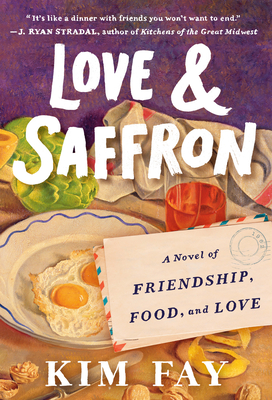 Love & Saffron: A Novel of Friendship, Food, and Love by
Love & Saffron: A Novel of Friendship, Food, and Love by  Escape Rating A: This is a bit more
Escape Rating A: This is a bit more